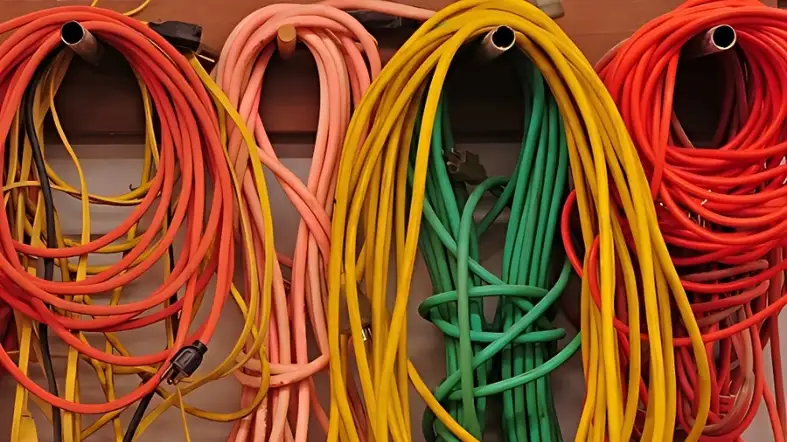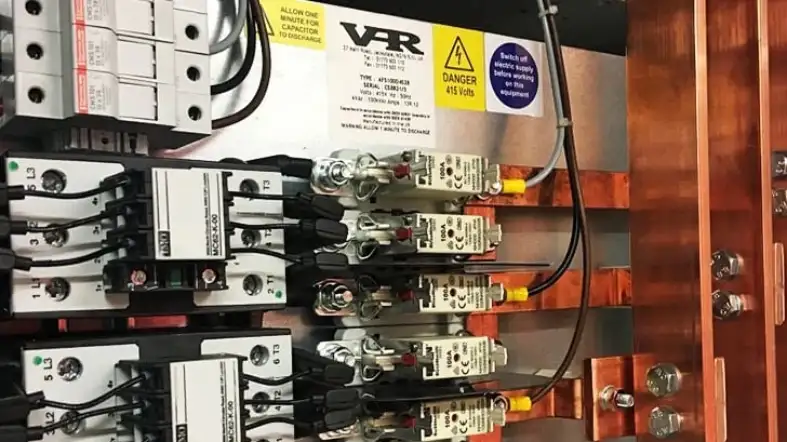knowing what size wire for generator to house is an important consideration when connecting a generator to a house. Choosing the right wire size ensures that the generator can safely and efficiently power your home.
In this blog post, we’ll discuss the importance of wire sizing and provide practical tips for selecting the right wire size for your generator-to-house setup.

What Size Wire for Generator to House?
For a 5000-watt generator output and a distance of 50 feet, a 10-gauge wire is recommended. The wire gauge size for a generator-to-house connection depends on the generator output in watts and the distance between the generator and the house.
Wire Size Chart for Generator House:
| Generator Output (Watts) | Distance (Feet) | Wire Gauge |
|---|---|---|
| 5000 | 50 | 10 |
| 5000 | 100 | 8 |
| 7500 | 50 | 8 |
| 7500 | 100 | 6 |
| 10000 | 50 | 6 |
| 10000 | 100 | 4 |
The Importance of Choosing the Correct Wire Size
Safety Risks
Using a wire that is too small can create a fire hazard. The wire may overheat and melt, potentially causing a fire.
Performance Impact
Using a wire that is too small can also impact the performance of your generator.
The generator may not be able to deliver its full power output, resulting in reduced performance.
Cost Efficiency
Using the correct wire size can also save you money in the long run.
A wire that is too small may need to be replaced more frequently, resulting in additional costs.
Energy Efficiency
Using the correct wire size can also improve energy efficiency. A wire that is too small may result in energy losses, reducing the overall efficiency of your generator-to-house setup.
Types of Wires Suitable for Connecting Generator to House

Copper Wires
Copper wires are commonly used for electrical wiring because they are good conductors of electricity and are relatively easy to work with. They are a popular choice for connecting a generator to a house.
Aluminum Wires
Aluminum wires are also good conductors of electricity and are often used as an alternative to copper wires. However, they are not as easy to work with as copper wires.
Multistrand Wires
Multistrand wires consist of multiple strands of wire twisted together. They are more flexible than single-strand wires and are often used in situations where flexibility is important, such as when connecting a generator to a house.
Coated Wires
Coated wires have an insulating coating that protects the wire from damage.
This coating can be made of various materials, including plastic, rubber, or silicone.
Coated wires are a good choice for connecting a generator to a house because they provide an extra layer of protection.
How to Determine the Right Wire Size for Your Generator-to-House Setup
To determine the right wire size for your generator-to-house setup, you’ll need to consider several factors.
Checking the Generator’s Nameplate
Check the generator’s nameplate. Look for the system voltage in volts and the generator power in watts.
The system voltage should be 120/240V. The generator power may range from 1000W to 10,000W.
Understanding Circuit Breakers and Amp Ratings
Note the amp rating of each circuit breaker. There may be just one main breaker, or a main breaker and several branch breakers.
The cable connected to a single main breaker, or the cables connected to the branch breakers, must be appropriate for the current rating of the breaker.
Calculating the Full Load Current
Calculate the full load current. If there is only a main circuit breaker, the full load current will be the generator power in watts divided by the voltage.
For example, if the generator power is 2400W and it operates at 120V, the full load current is 20A.
Assessing Voltage Drop
Check for voltage drop. Check the wires for a voltage drop of 3 percent or less. For small standby generators located close to the loads, this is not usually a problem.
For units located farther away, where the required cable size is close to the full load current, it can affect operation.
Practical Example
Let’s say that you have an 8,000W generator running on a 220V circuit. What size wire do you need for an 8,000-watt generator?
First, you need to calculate the amps like this: 8,000W/220V = 36.4A. Then you have to account for the 80% NEC rule by multiplying the amps by a 1.25 factor like this: 36.4A×1.25 = 45.5A.
This means you need a wire with at least 45.5A ampacity. 8 gauge AWG copper wire has an ampacity of 50A; this is the wire size you need for an 8,000-watt generator.
Factors Influencing Wire Size Selection for Generator to House

Generator Wattage
The wattage of your generator determines how much power it can deliver.
The higher the wattage, the larger the wire size you’ll need.
Distance to the Electrical Panel
The distance from your generator to your electrical panel influences your wire size selection. The longer the distance, the larger the wire size you’ll need.
Ampacity Requirements
Ampacity refers to how much current a wire can safely carry.
You’ll need a wire size that meets or exceeds your ampacity requirements.
Environmental Conditions
Temperature and humidity can also influence your wire size selection.
In hot or humid conditions, you may need a larger wire size.
Safety Standards and Regulations
Safety standards and regulations may specify minimum wire sizes.
You’ll need to choose a wire size that meets or exceeds these standards.
Budget Considerations
Your budget may influence your wire size selection.
Larger wire sizes are generally more expensive than smaller wire sizes.
Installation Method
The method of installation can also affect your wire size choice.
Underground installations may require larger wire sizes than overhead installations.
Local Building Codes and Zoning Requirements
Local building codes and zoning requirements may also specify minimum wire sizes.
You’ll need to choose a wire size that meets or exceeds these requirements.
Practical Tips for Installation
Tools Needed for a Successful Installation
You’ll need several tools to install a generator-to-house connection.
These include wire strippers, a wire cutter, a screwdriver, and a multimeter.
Safety First: Precautions to Consider
Be sure to follow all safety precautions when installing a generator-to-house connection.
This includes turning off the power to your house and wearing protective gear such as gloves and safety glasses.
To DIY or Not: Professional vs. DIY Installation
If you’re not comfortable installing a generator-to-house connection yourself, consider hiring a professional electrician.
They can do the job for you.
FAQs
Can I use aluminum wires instead of copper for my generator-to-house connection?
Is it safe to DIY the installation of the generator-to-house wire?
Are multistrand wires better than single-strand wires for this application?
Does wire size impact energy efficiency?
Is it more expensive to opt for larger wire sizes?
Conclusion
Choosing the right wire size is an important consideration when connecting a generator to a house.
By taking into account factors like the generator’s output, the distance from the generator to the house, and the electrical load of the house, you can select the right wire size.
This will ensure that your generator can safely and efficiently power your home.
